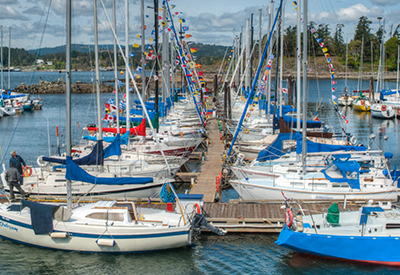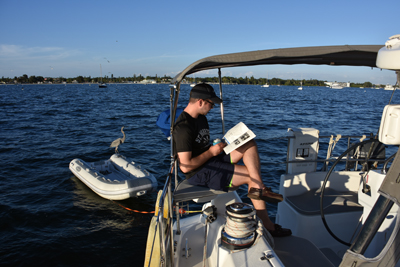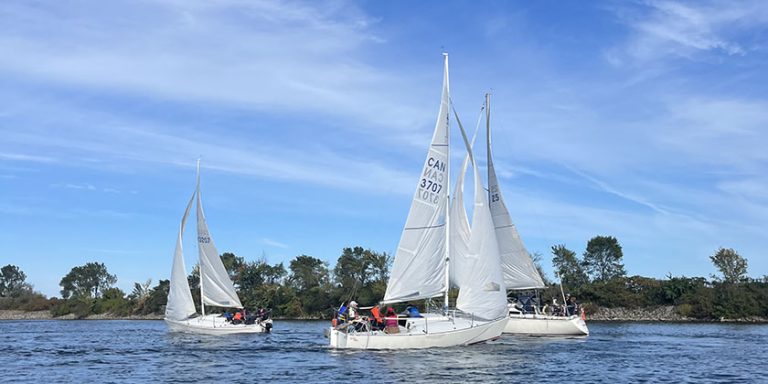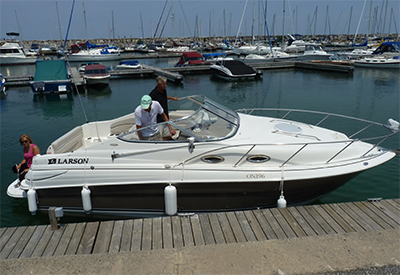Great Resources for How to Weather the Weather
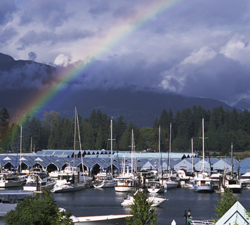
I’ve been a pilot for 37 years and spent 28 years flying passenger aircraft for the airlines – you can bet that the weather was always one of my foremost concerns.
I’ve retired from the airlines, but my interest in the weather, in forecasting weather and in all of the available resources to help me plan a safe journey, are just as important as ever. It’s still a matter of my personal safety, the safety of my loved ones and my friends, except now, I’m at the helm of my own boat.
Weather forecasts can be daunting. As you learn more and more about them, you may feel like there’s never going to be a good time to head out! Actually, there are lots of great boating days and as you gain a greater understanding of the weather – what the terminology and the forecasts really mean, as well as how the weather patterns typically change through the day, it gets a lot easier to find those great cruising days.
On the other hand, there are definitely days when I don’t leave the dock.
I’m concerned that many boaters don’t bother to check the weather before they hunker down for the night, let alone pay sufficient attention to it during the day.
A classic example of this happened in the North Channel three years ago:
The vessel was anchored in The Benjamins when a squall or microburst hit. Severe weather warnings were being issued all day, but this boater chose to ignore them. The boat was at anchor with all the hatches, windows and doors open. When they saw the weather coming, they raised the anchor and headed closer to shore. When the microburst hit, the boat initially weather cocked and then went over on its side. Of course with everything open, it filled with water and rather than righting itself, it went down fast. The occupants jumped into the dinghy, which was securely fastened to the big boat’s transom and subsequently both went down together. Another boater nearby came to the rescue.
This accident was preventable. If they had been paying attention to the weather warnings and forecasts, and if had they closed the boat up when they saw the storm approach, there is a very good chance that the boat would have righted itself with little or no damage.
There’s no way to force boaters to pay attention, but for those who value their boat, their safety and especially their families, there are all sorts of great resources to help you “weather the weather”.
It makes sense and personally, I find it is always interesting to take a few moments to be a “student” of the weather.
Consulting my favourite key resources only takes a few minutes. The information is both interesting and helpful and it’s a matter of safety too. Let’s face it, whether you have a raincoat or foul weather gear, isn’t it true that the rain only hits when you aren’t prepared?
Weather Ways, published by Environment Canada gives you general knowledge about weather: the types of clouds, how to read fronts and more.
Modern Marine Weather and the accompanying Modern Marine Weather Workbook by David Burch are well geared to boaters and their particular needs. This workbook places the emphasis on surface conditions and forecasts and then presents the information in way that a boater will be able to use easily. I like the workbook learning style.
Chris Tibbs’ book, On-Board Weather Handbook, is also a must for your boat’s library. It is about understanding weather conditions at sea, what the clouds, winds and the barometer are telling you.
If you are an offshore cruiser, there’s another great resource, but it’s not a book! Herb Hilgenberg is an incredible Canadian who has set up his own broadcasting outfit in Burlington, Ontario. You get Herb at HFUSB – 12359.0 on USB, “Upper Side Band” radio.
According to Wikipedia, Herb is a Canadian sailing enthusiast who, since 1987, provides a daily ship-routing/weather forecasting service for vessels at sea. Hilgenberg provides his service free of charge via marine HF/SSB on a frequency of 12359.0 kHz starting at 2000 UTC.
Hilgenberg personally experienced bad weather at sea while sailing with his family. In response to the lack of information about weather on the ocean, Hilgenberg started to contact boats on the ocean and update them with weather forecasts and routing suggestions.
Hilgenberg provides his service to approximately 50 vessels a day, 7 days a week. He operates his service from his home in Burlington, Ontario and he has assisted the Coast Guard during multiple search and rescue cases. Several people are alive today due to Hilgenberg’s efforts. Herb Hilgenberg was awarded the Queen’s Golden Jubilee Medal in 2002.
Herb primarily provides forecasts for the North Atlantic between the Eastern Seaboard and Europe, including the Caribbean Sea, the Bahamas Islands and the Gulf of Mexico. Limited coverage is available for the South Atlantic and the Eastern Pacific subject to HF propagation. His forecasts are not available via E-mail, fax or telephone except in case of an emergency. This service is intended for extended offshore passages – remember that one man cannot communicate with all the boat traffic out there.
Herb operates his fixed HF marine land station VAX498 on HF/SSB frequency12359.0 and appropriate vessels are advised to check in between 1930 and 2000 UTC. He has developed considerable meteorological expertise over the years, and most yachtsmen sailing across the North Atlantic consider that he is more reliable than the official sources, at least for needs of small sailing vessels!
Books are great, but many of us gravitate to our new mobile electronic devices. I can whip out my smart phone and in seconds, probably using an inexpensive “app” or maybe just going online for a few minutes, I can access up to the minute weather info.
On my boat, I also use Sail Flow, which is available on the Internet for forecasting winds. This Internet service opens to a map and it probably geolocates to where you are, depending on your phone’s features. Otherwise, you enter the place where you are and where you want to sail to. Sail Flow will then forecast the winds for up to 7 days in advance. The map is easy to read with colour coding, and if you see “red” you stay in.
Of course, the main weather information source for any Canadian boater should be the Environment Canada website for the marine weather. This also opens to a map of Canada and as you scroll over it, callouts help you locate general areas. Click there to drill down and get more area specific as you go.
You get to written weather information in a couple of clicks and here’s an example of what you get, “Waves less than one half metre building to one this evening and to two overnight. Waves building to three Monday morning.”
So, “less than one half metre” are waves most pleasure craft will have no problem with, but building to two meters overnight and up to three metres Monday indicates weather a pleasure craft should not be out in. It also tells me to search for more information about weather changes and the front that is probably approaching.
If you do your boating on either the west coast or the east coast where you are close to the USA, or through the Great Lakes where you are almost always within 50 miles of the USA, you will want to check with the National Oceanic and Atmospheric Administration (NOAA) online.
NOAA is an excellent service and gets you straight to detailed forecasts for the area you want. On the upper left corner of the website home page, just type in the city you want and hit “Go”. You get detailed local forecasts right away.
I have cruised down south as well and the National Hurricane Center is a resource I use all the time I’m down there. This information helps me to plan my trip to make sure that the path I take does not bring me into a weather problem.
Some additional resources include AWS radar that is available through your smart phone. You program the websites into your smart phone. If your boat has radar on board, Doppler radar can measure the intensity of the water droplets, adding another level of information.
Check the stereo system that came in your boat. Many of the marine audio systems are equipped to get Sirius satellite radio and that has a weather feed.
If you would prefer to join a classroom and have expert instructors teach you all about the weather, contact your local Canadian Power and Sails Squadron (CPS) and ask about their Advanced and Elective Courses on Weather, Navigation and Piloting. If I wasn’t already trained in weather for my pilot’s license, I would start with CPS. They are Canada’s best resource for boating education.
Finally and universally, all across Canada, anytime you are out on your boat, you should turn on the VHF radio and always be monitoring Ch 16 for weather alerts. Environment Canada VHF radio broadcasts on VHF Channel 16 should be audible onboard at all times, at least to the captain, if not all those people onboard.
This is the most simple and effective way to stay on top of weather that almost certainly will change throughout the day.
With no other equipment than just a VHF radio, those boaters whose cruiser sank in The Benjamins should have known that the front was coming…there’s no excuse.
This season, be safe and comfortable on your boat with detailed weather knowledge!
FAST FACTS
Canadian Power and Sail Squadrons
www.cps-ecp.ca
Environment Canada – Marine Weather
www.weatheroffice.gc.ca/marine
National Oceanic and Atmospheric Administration
(NOAA) www.noaa.gov/wx.html
Herb Hilgenberg
en.wikipedia.org/wiki/Herb_Hilgenberg
SailFlow
www.sailflow.com
By John Armstrong and Andy Adams

